Roof Scuppers • Introduction to Roof Scupper Drainage
By Jack Gray, Roof Online Editor • Updated March 18, 2024
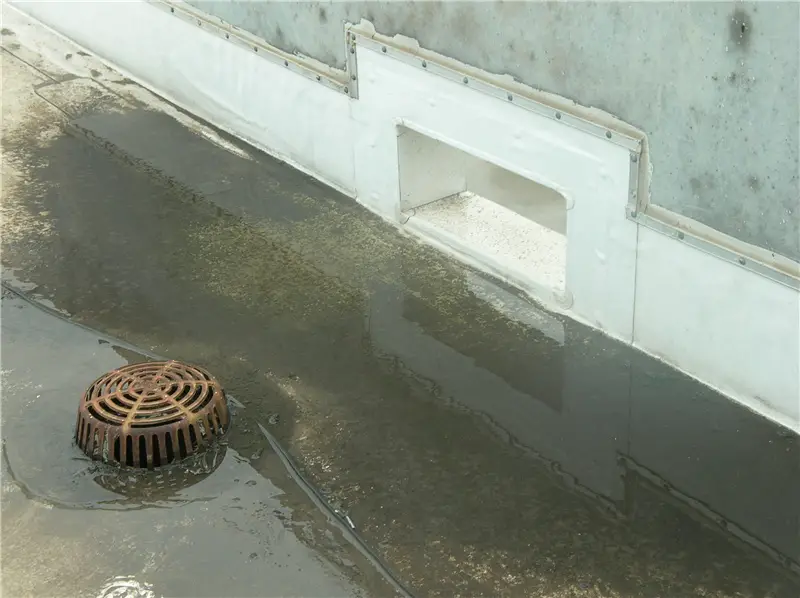
Table of Contents
- Introduction
- What is a Roof Scupper?
- Types of Roof Scuppers
- Roof Drainage Systems and Scuppers
- Roof Scupper Code Requirements
- Roof Scupper Tips
- Related Articles
- External Sources & References for Roof Scupper Information
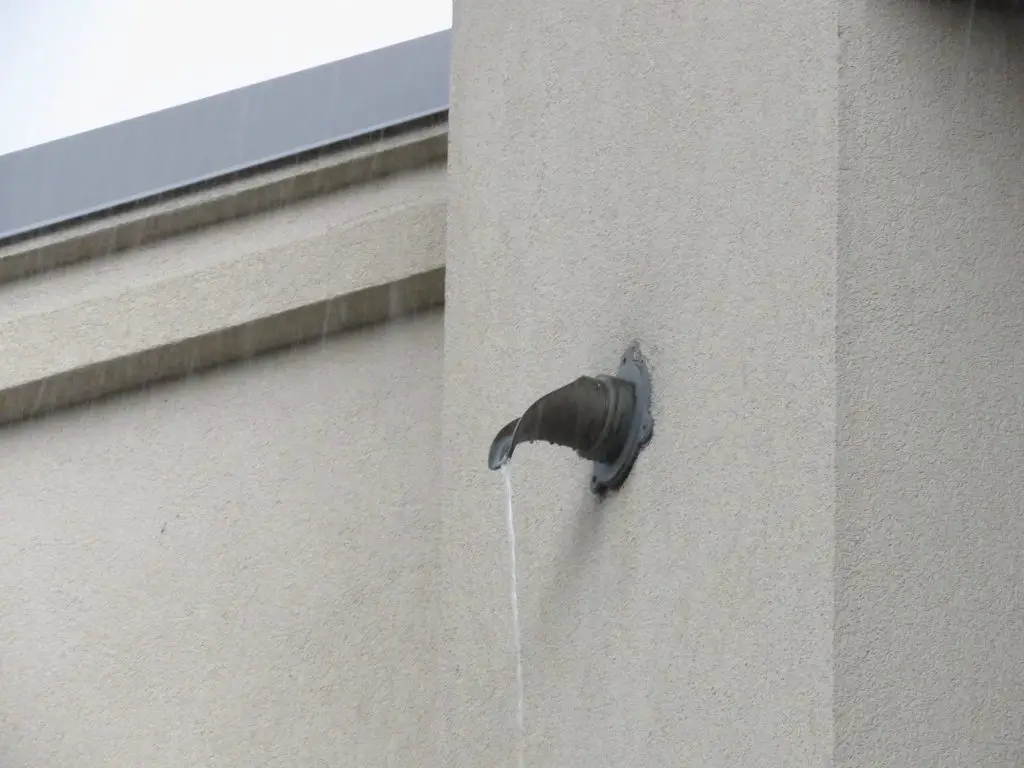
Introduction
We’re professional building envelope consultants – roof experts. Our clients include homeowners associations, corporate real estate asset managers, property managers, and facility directors.
As a part of our job, we research and design roof drainage systems for new roof installations and roof replacement projects.
We have to decide whether to use roof drains, roof scuppers, gutters, or some combination of these. We specify scuppers, inspect scuppers, and oversee scupper repairs and scupper maintenance.
We know roof scuppers pretty well, and we thought we would share some helpful scupper information here on our website.
What is a Roof Scupper?
The International Building Code defines a roof scupper as “an opening in a wall or parapet that allows water to drain from a roof”.
Roof scuppers are occasionally referred to as “roof scupper drains” or just “scupper drains”, for obvious reasons. Scuppers do drain the roof, but it is incorrect to call them drains. “Roof drain” refers to a component that allows water to drain through the roof, not off the side of it.
Roof scuppers with spouts that project out beyond the wall are known as “roof canales” in the American Southwest, where they are often used for rainwater collection.
Scuppers provide a pathway for water to flow through parapet walls or any other raised edge around a roof, such as gravel stop edge metal.
Primary roof scuppers normally channel water off a low-slope or “flat” roof into a conductor box that connects to a downspout or a gutter. Overflow roof scuppers will let the water run freely down the side of the building.
A roof scupper is usually part of a peripheral roof drainage system, which is a roof drainage system in which the water drains off the sides of the roof, instead of through the roof itself using drains (an internal roof drainage system).
Where flat roof sections on the same building are separated by walls, there will often be scuppers in the walls that allow water to drain from one flat roof section to another.
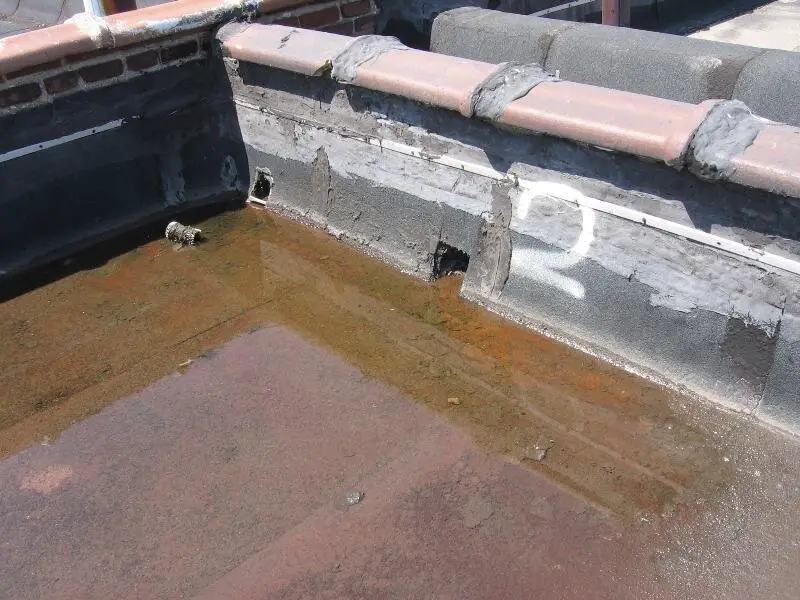
Types of Roof Scuppers
Roof scuppers mainly come in two forms: the open scupper (a 3-sided scupper, open at the top, also called a “channel-type” scupper), or the through-wall scupper (basically a hole in the wall, usually rectangular).
Occasionally, you’ll see a round roof scupper or a decorative scupper in some other shape.

Thru-Wall Roof Scuppers
Through-wall (or “thru-wall”) scuppers are typically lined with sheet metal such as galvanized steel or copper. Aluminum is not normally used, because it’s more difficult to form and solder aluminum on site than other metals used in roof construction.
This metal component is called a “scupper box”. The scupper box is integrated with the roof system (flashed, or “stripped in”) on the interior side of the wall, and usually terminates on the outside of the wall with a faceplate with sealant around it.
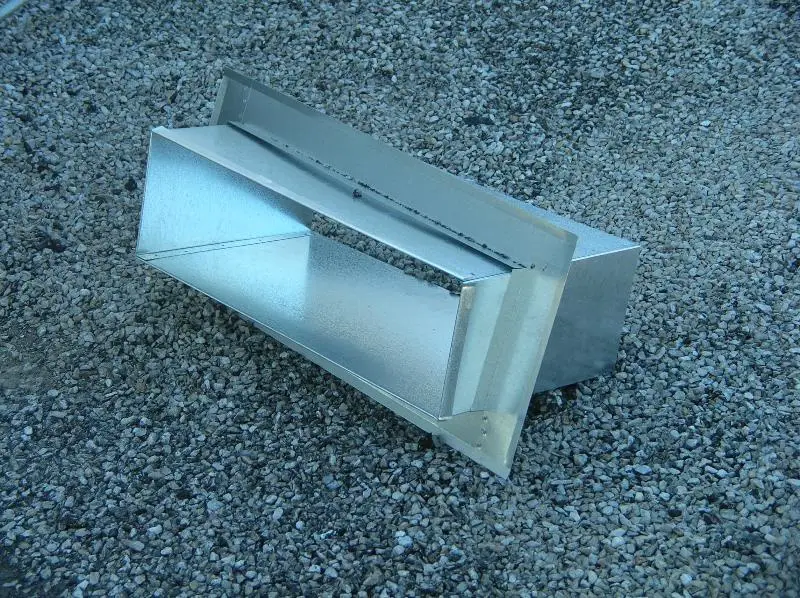
Channel-Type Roof Scuppers
Channel-type roof scuppers are also typically lined with metal, but the metal is integrated with the coping or other edge metal as well as being flashed into the roof membrane.
Less commonly, other materials, such as liquid-applied waterproofing resin, are used to line the roof scupper hole.
Often with single-ply roof membranes such as TPO roofing or EPDM, the roof membrane material will continue inside the scupper, lining the entire exposed surface of scupper box, bonded to the metal.
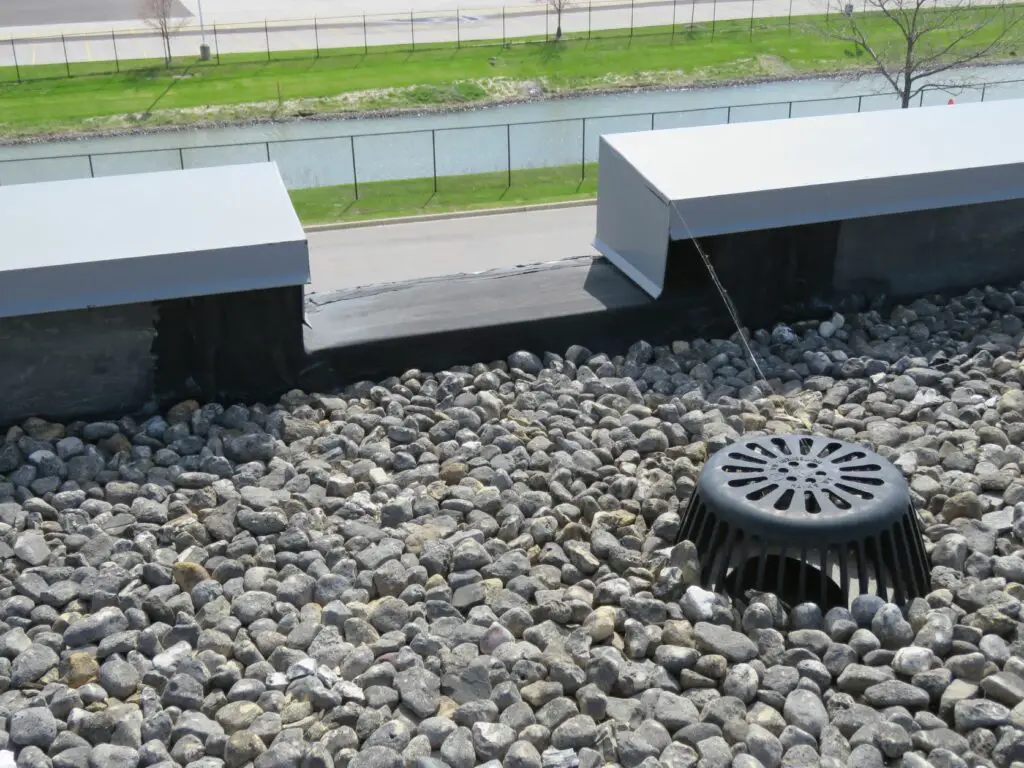
Roof Drainage Systems and Scuppers
Scuppers will play one of two roles in a roof system: they will either be a part of the primary roof drainage system, or they will be a part of the secondary (overflow) roof drainage system.
A primary drainage system will simply be designed to remove water from the roof as quickly as possible.
An overflow drainage system will be designed as a complete second drainage system which functions independently of the primary system.
The overflow drainage system’s purpose is to drain water from the roof if the primary drains or scuppers become blocked so the roof structure doesn’t become overloaded by the weight of the water. Overloading can lead to deformation of the roof structure or even roof collapse.
Note that if you’re standing on the ground and look up and see that the scuppers in the parapet wall are all solo scuppers, then the scuppers on that roof are probably the secondary drainage system, and the roof probably has internal drains.
If the scuppers are all in pairs close together at every location, then one of those scuppers will normally be a part of the primary drainage system and the one next to it is an overflow scupper.
Occasionally, there WILL be two scuppers right next to each other which both serve the same purpose and are the same height off the roof. This usually happens when an insurance company determines that the original roof scupper wasn’t big enough due to code changes or updates to the insurance company’s loss prevention standards.
When this happens the building owner has to increase the drainage system capacity by enlarging the scupper holes or adding new scuppers next to the existing ones.
Location of Primary Scuppers
Primary roof scuppers are used in place of internal roof drains (for various reasons). Primary scuppers will be the main drainage element for the roof areas they serve.
Scuppers that are part of the primary drainage system are installed so that the bottom edge of the roof scupper holes are even with the surface of the roof.
All roofs (even “flat” roofs) will slope down to the primary scuppers. The scuppers will be located in the parapet wall at the lowest points of the roof.
Location of Secondary (Overflow) Scuppers
Scuppers that are part of the overflow drainage system are also installed at the lowest points of the roof, but slightly higher than the level of the roof surface.
They are typically installed at a point in the parapet wall that is as close as possible to the primary drain for that area. The overflow scupper is located as close to the primary drain as possible so that it will drain the same roof area that the drain does if the drain becomes clogged.
If scuppers are used as the primary drainage system instead of internal drains, the overflow scuppers will usually be very close to or right next to the primary scuppers which drain the same roof area, but the bottom of the secondary scupper holes will be about two inches higher.
Sometimes water can’t flow directly to the wall because of an obstruction (such as a curbed expansion joint, for example) between the primary drain and the wall. In this case the overflow scupper will be installed in the nearest, lowest part of the wall that water can directly flow to from the drain location.
The bottom edges of the overflow scuppers that you see on existing buildings today will almost always be about two inches above the adjacent roof surface.
This is to prevent overflow scuppers from acting as primary drains.
Overflow scuppers should only drain the roof if the primary drains or primary scuppers are blocked and water is ponding on the roof as a result.
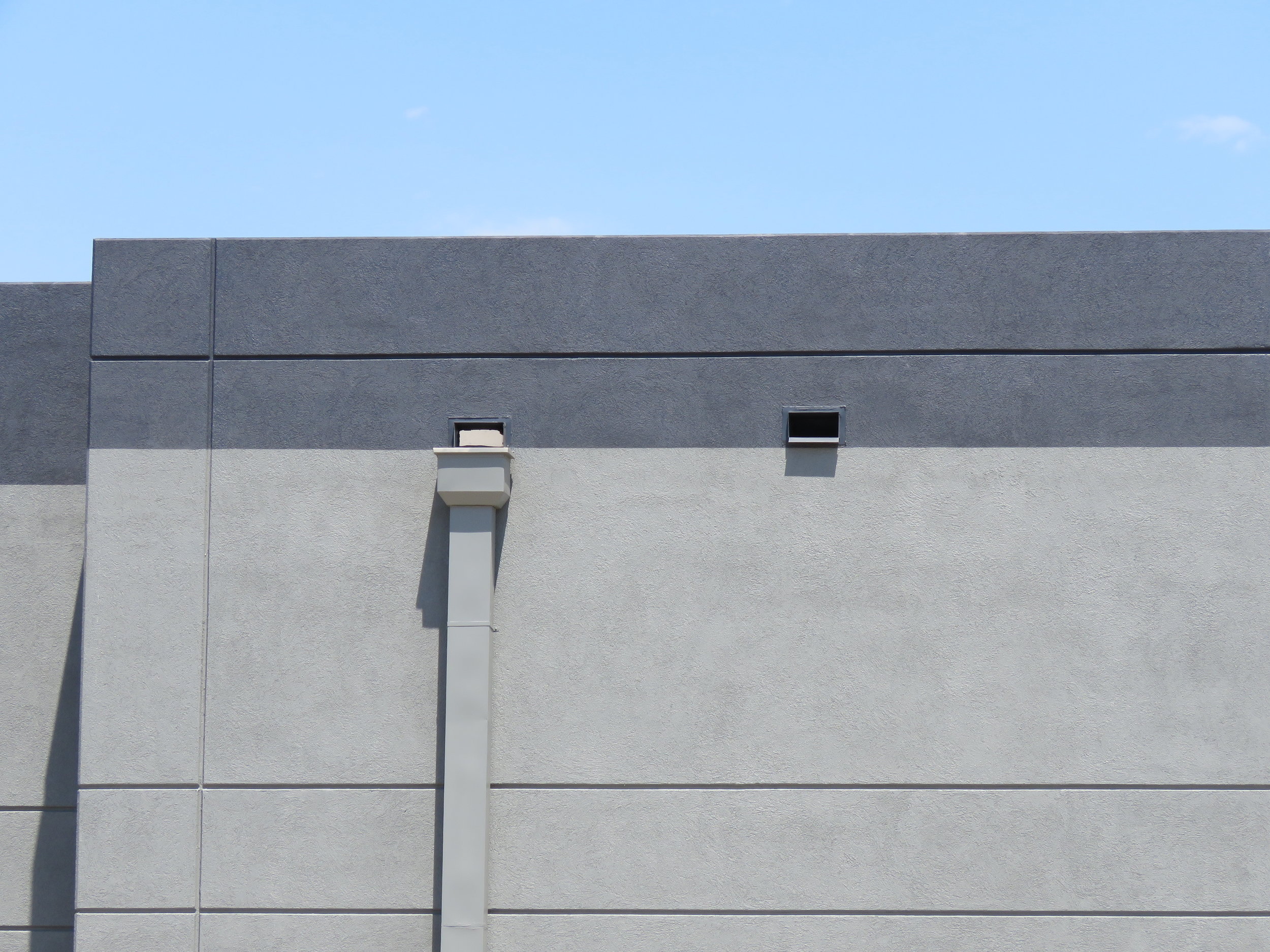
Roof Scupper Code Requirements
There are different code requirements for scuppers depending on which role they play.
It’s important to note that the language regarding both primary and overflow scuppers in the most recent version of the International Building Code states that:
“the quantity, size, location and inlet elevation of the scuppers shall be chosen to prevent the depth of ponding water on the roof from exceeding the maximum water depth that the roof was designed for as determined by Section 1611.1 of the International Building Code”.
This is not very helpful if you don’t have access to the structural design specifications for the building.
The rule of thumb that the bottom of the scupper should be two inches above the level of the roof was standard in the roofing industry for decades and may still be the code requirement in some jurisdictions, depending on the version of the code currently in use.
Roof Scupper Size
The only unconditional guideline for roof scupper sizing provided by the code is that “scupper openings shall be not less than 4 inches (102 mm) in height and have a width that is equal to or greater than the circumference of a roof drain sized for the same roof area.”
So we can at least be certain that round scuppers can’t have a diameter of less than 4 inches, and rectangular scuppers can’t have any side be less than 4 inches.
If you do know the diameter of a properly-sized drain for a particular roof area, however, you can easily calculate the required size of the equivalent roof scupper using the guideline above.
If you need to install an overflow scupper for a roof area which already has a roof drain, and you are certain that the existing roof drain is the proper size required by code, you can use the 4 inches x circumference prescription to determine the size of your new scupper.
If you’re looking for extensive technical guidelines for sizing and locating scuppers, FM Global’s “DS 1-54 Roof Loads for New Construction” (Data Sheet) is an excellent resource (see the link below).
Roof Scupper Tips
Scupper Maintenance
Sealant Deterioration: The sealant around the flange or faceplate on the exterior wall surface around a thru-wall scupper is a maintenance item.
Sealant deteriorates over time. It’s important to check the condition of this sealant every year and replace it when it starts to go.
This sealant plays a critical role in preventing roof leaks. It keeps water from getting between the metal scupper box and the wall masonry, and then backing up into the roof system and into the building.
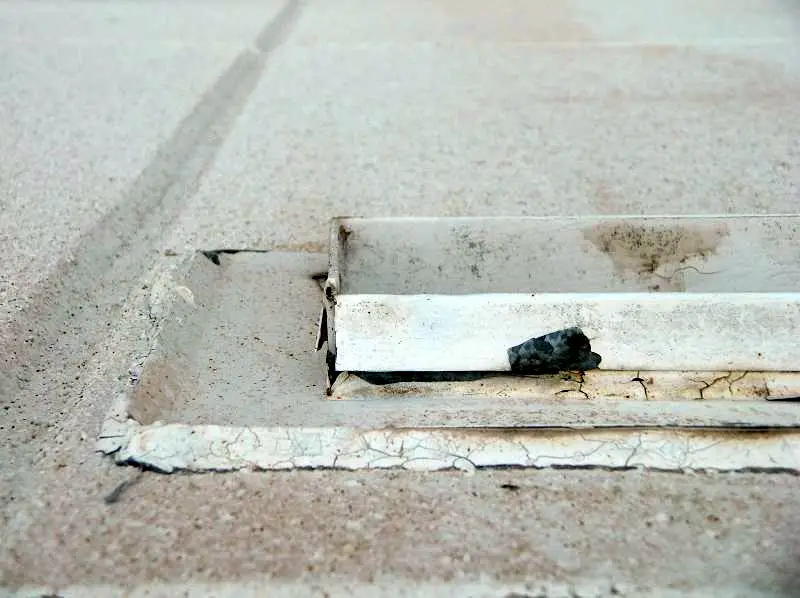
Overflow Scuppers Can Tell You if the Drains are Clogged
Clogged Drains: Scuppers that serve as primary drainage components typically direct water into a conductor box, downspout, or a gutter (you don’t normally want to see water running down the side of your building or shooting out into the air like a miniature waterfall).
If interior roof drains are your primary drainage system, and the scuppers are your secondary drainage system, you do want to see this water coming out of the scuppers, because it lets you know that your drains are clogged.
This is why overflow scuppers are basically just holes in the wall without a conductor head and downspout. A proper drainage system will give you an unobstructed view of the overflow scupper openings.
You want to be able to see if water is coming out of them, so you can tell right away if you need to get your primary drains cleaned.
You should also check your roof scuppers as well as your roof drains at least twice a year as part of a roof maintenance program. Remove any debris you find to prevent clogs and the chances of excess water accumulating on the roof.
Ice Can Block Scuppers
Ice Build-Up: In colder climates, ice build-up at the scuppers in the winter can be a problem.
Due to the fact that the scuppers are in the wall and not over the heated part of the building, they tend to be colder than the rest of the roof.
Meltwater from snow on the roof may re-freeze at the scuppers and block water drainage, which could overload the roof. It’s important to have your scuppers checked and cleaned if this situation applies.
Scuppers and Roof Replacement
Re-Roofing: The existing scuppers in a parapet wall will have been designed for the height of the original (or previous) roof system.
Recent changes to energy codes demand higher R-values, and therefore thicker roof insulation, which means that if you are replacing your roof, the surface of the new roof will probably be higher than the surface of the old roof.
This means that your primary thru-wall scuppers will be partially or even completely blocked by the new roof, and your overflow scuppers will no longer be at the proper height.
In order to comply with the building code, as well as common sense, you are probably going to have to raise the height of the scupper holes when you install a new roof.
About the Author
Jack Gray is a principal roof consultant and vice president at the Moriarty Corporation, an award-winning building enclosure consultant firm founded in 1967. He is also the editor of the Roof Online website.

Mr. Gray has worked in the roofing industry for over 25 years, with training and practical experience in roof installation, roof inspection, roof safety, roof condition assessment, construction estimating, roof design & specification, quality assurance, roof maintenance & repair, and roof asset management.
He was awarded the Registered Roof Observer (RRO) professional credential in 2009.
He also served as an infantry paratrooper in the 82nd Airborne Division and has a B.A. from Cornell University. Read full bio.
Related Articles
- Building Codes and Roofs
- Gutters and Downspouts
- Roof Drainage
- Roof Drainage Component Manufacturers List
External Sources & References for Roof Scupper Information
1. Building Codes: “1502.3 Scuppers” and “1502.2 Secondary (emergency overflow) drains or scuppers” from the 2018 International Building Code. Available on the UpCodes website.
2. Building Codes: “R903.4.1 Secondary (Emergency Overflow) Drains or Scuppers” from the 2018 International Residential Code. Also note exception 2 under subsection 1 under “Section R908 Reroofing“. Available on the ICC website.
3. Building Codes: “Secondary Drainage and Ponding Requirements in the IBC and IEBC” is a good place to start if you’re trying to understand code requirements regarding scuppers as dictated by the 2015 International Building Code (including major changes from previous versions of the IBC). Article is from 2017 and is on the IIBEC (formerly RCI) website.
4. Technical: “Appendix B: Rates of Rainfall for Various Cities” on the ICC website provides the rainfall data for major US cities required for the sizing calculations mandated in the building codes. If your town is not listed, visit NOAA’s Precipitation Frequency Data Server (PFDS) to look up the 100-year one hour rainfall data for your area.
5. Technical: For guidelines on proper sizing and placement of roof scuppers, see FM Global’s DS 1-54 Roof Loads and Drainage (Data Sheet). You’ll have to sign up in order to view data sheets on the FM Global website, but it’s free and definitely worth your time.
6. Technical: An excellent technical article on scuppers at the website of the Copper Development Association. Provides construction details for various scupper types. They talk about scuppers being made out of copper in that article, but that doesn’t mean that scuppers have to be made out of copper or that the information provided is only applicable to copper scuppers. (Copper is a great scupper material, though).
7. Technical: Construction Details: See these scupper/roof tie-in details for various roof types in the technical database at the Holcim Elevate (formerly Firestone Building Products) website.
8. Technical: Basic instructions for the installation of a thru-wall scupper box are available at the website of Metal-Era.